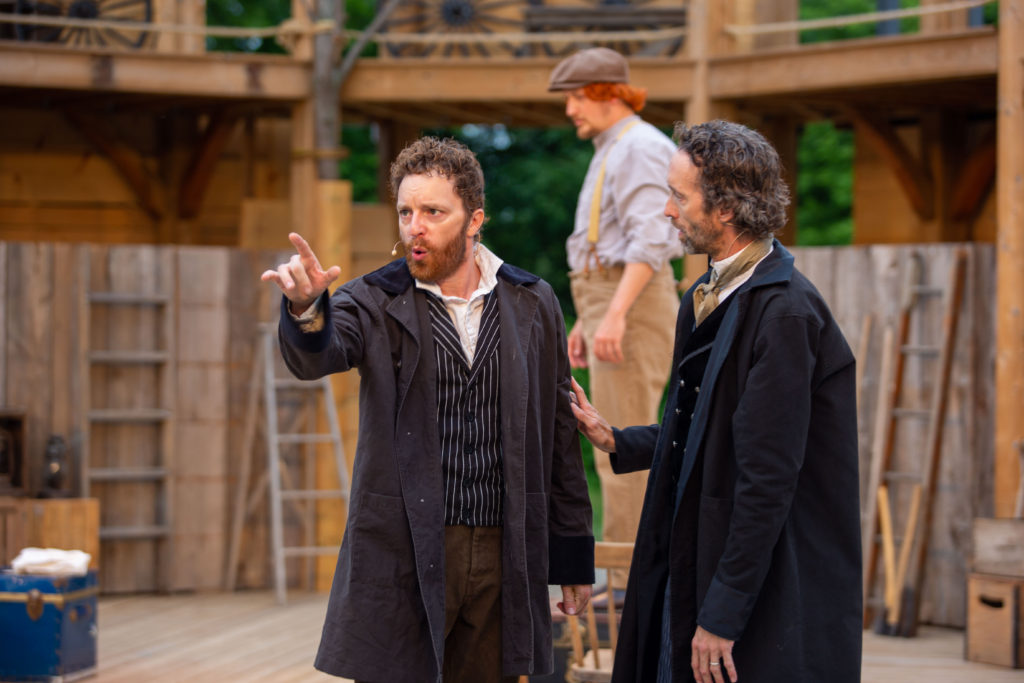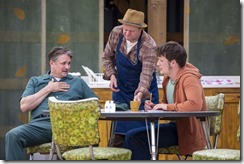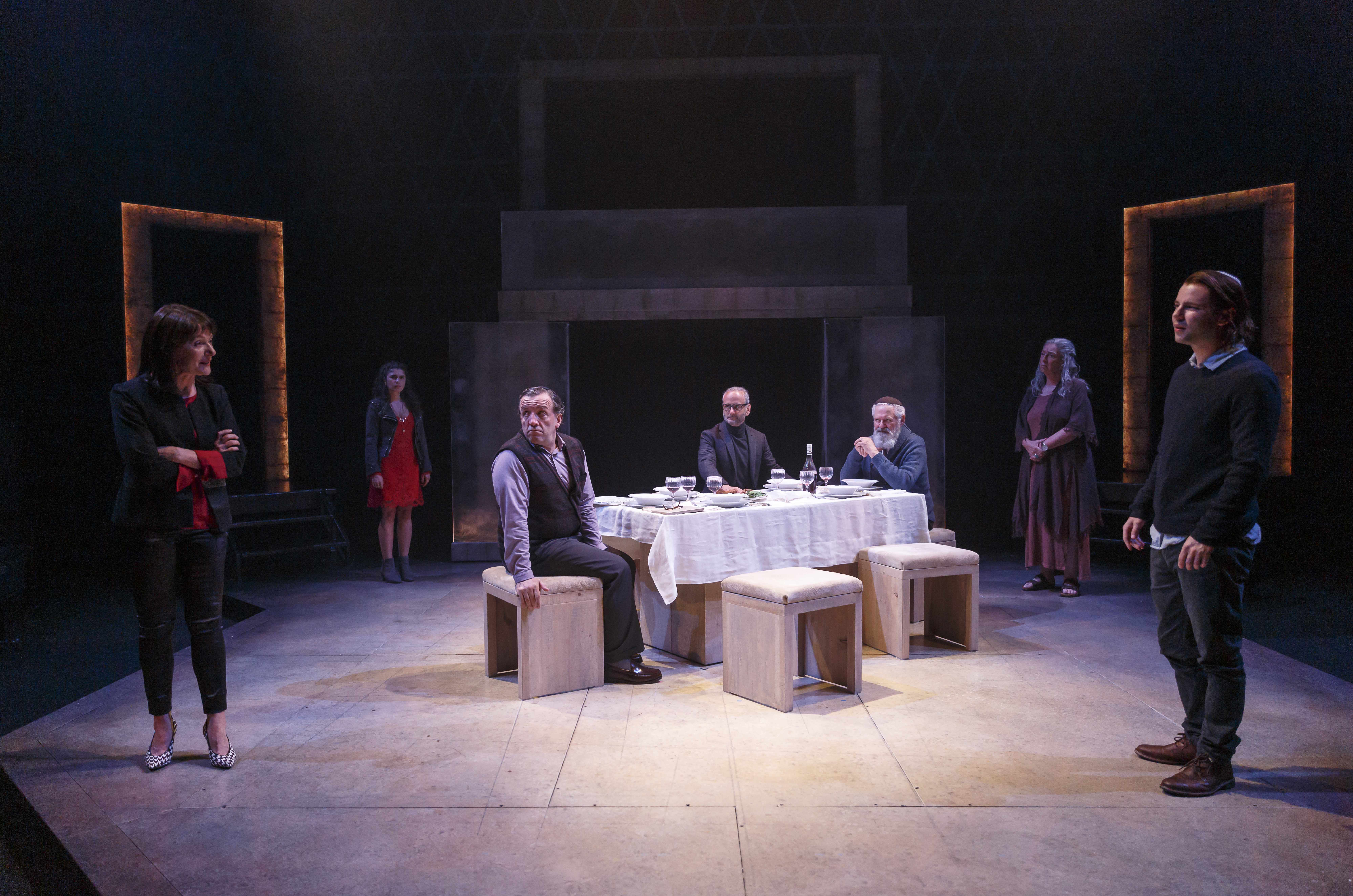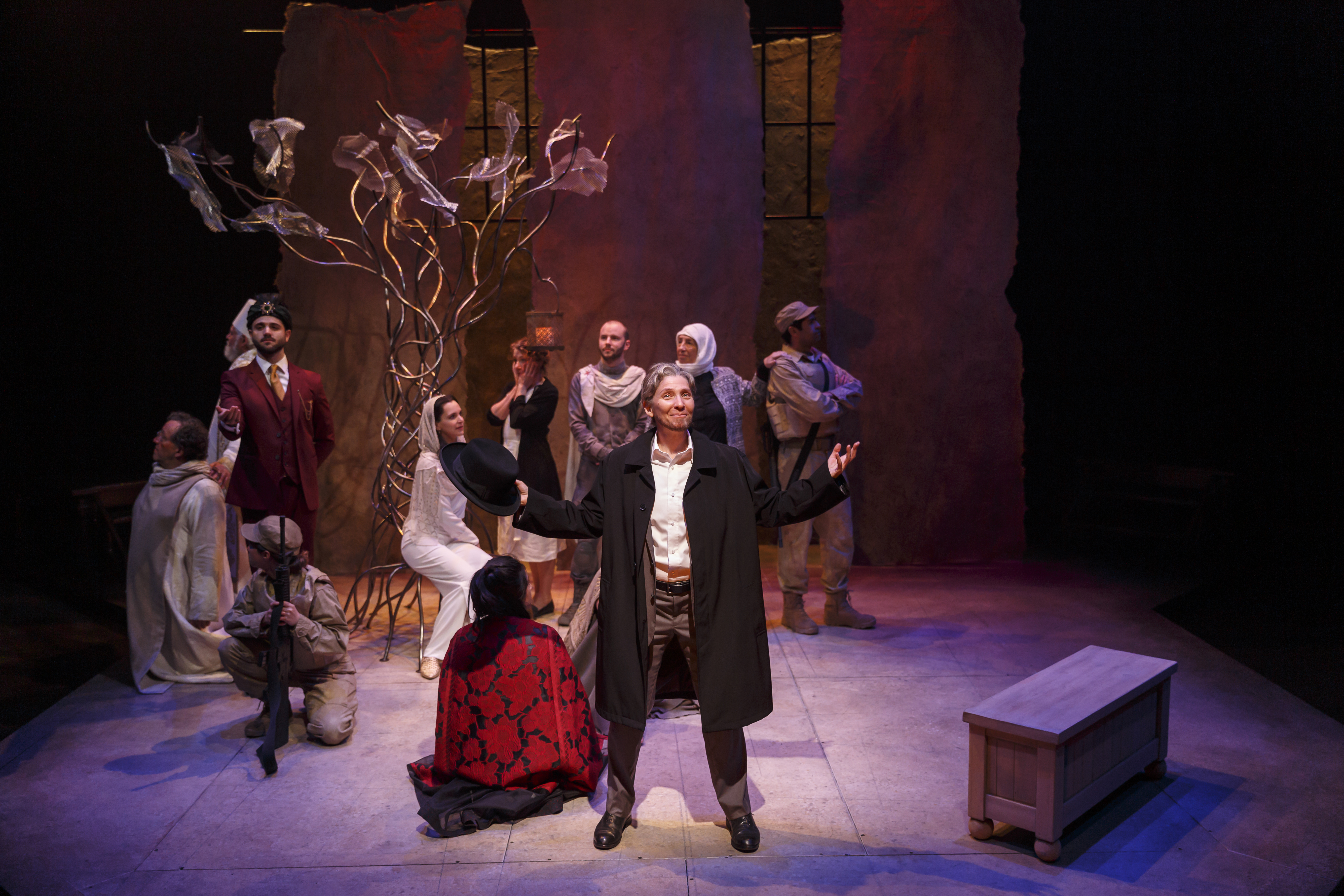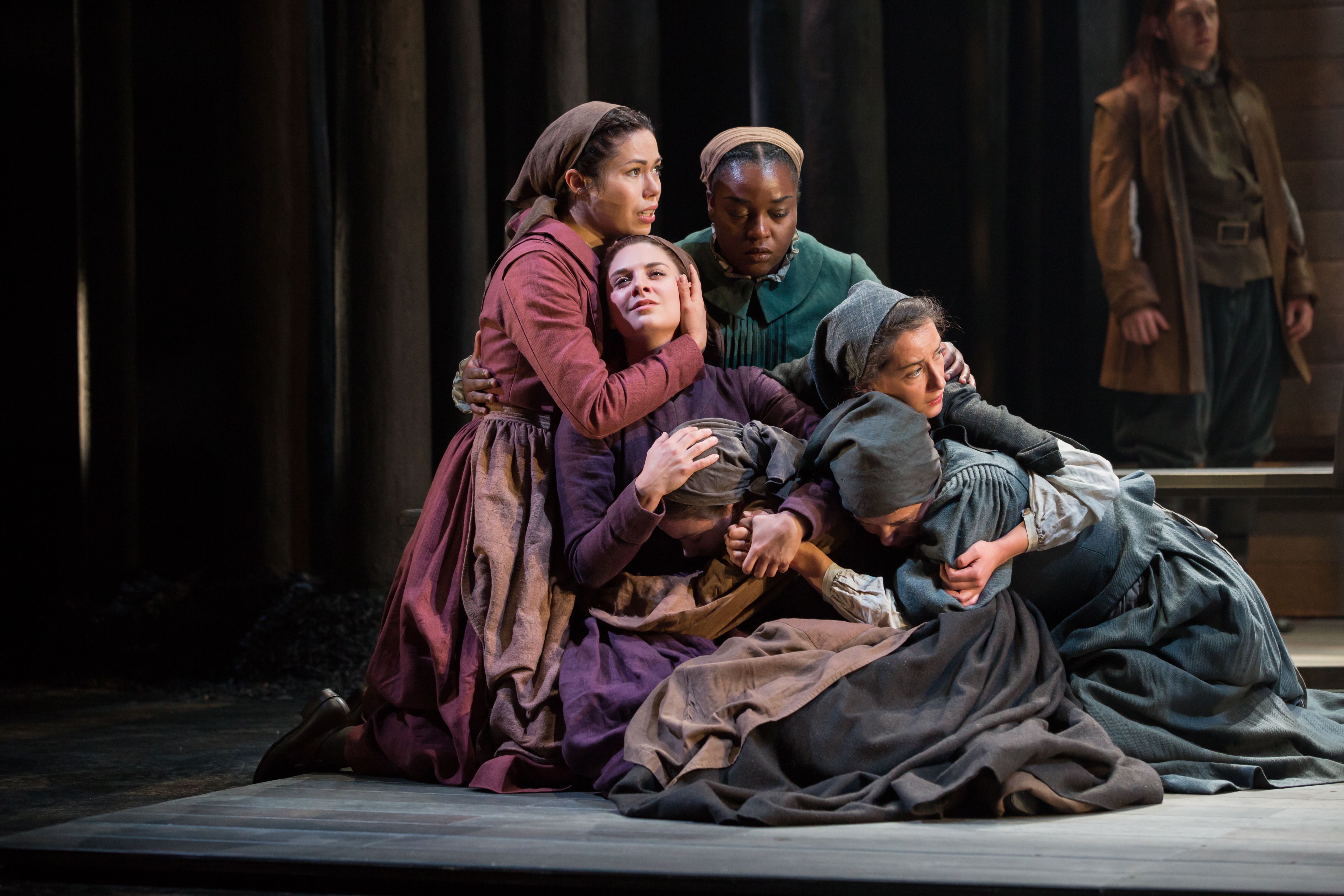Trauma in Translation: Stratford’s Milestone Salesman in China
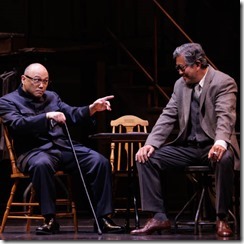
“My head feels like a bridge that all of Beijing has been walking over.”
The stage is bare except for a backlit figure who emerges in silhouette through a doorway, wearing a nondescript raincoat along with a classic grey fedora. In each hand, he carries a leather briefcase, but his shoulders are stooped, as though he is carrying the weight of the world.
We know him as a salesman, the most famous salesman in all of American theatre. Neither Oedipus nor King Lear, his burden represents the implausible modern Tragedy of the little man. But this time round, the figure plucked out of the crowd to enact a grim, anonymous fall from grace is discernibly Asian.
This is the way the collision of East and West begins, China and America in the still smoldering aftermath of the Cold War. Language breaks up and explodes visibly onstage to document a new and raw moment in cultural history.
In a now fabled encounter, Arthur Miller was invited to China in 1983 to direct a production in Mandarin at the Beijing People’s Art Theatre of his now classic Death of a Salesman, starring the legendary actor-director Ling Ruocheng. Miller had long been intrigued by China’s monumental socialist experiment as well as the turbulent events of the previous decade and he tried in vain to get a visa. But, now, the time was ripe. After the many stops and starts of a decade of Ping-Pong diplomacy, China was eager for economic reforms to boost its economy and cultural bridges to the United States were an obvious back door.
Leanna Brodie and Jovanni Sy’s stunning and hugely innovative new play Salesman in China casts this epic production as an encounter between two cultures, but one which also joins two titans of the theatre on opposite sides of the Cold War divide. As a Stratford Festival-Banff Centre co-commission, produced in association with Canada’s National Arts Centre, the cultural stakeholders setting the groundwork for the play were placing a monumental bet on a legendary cultural event becoming a dynamic new piece of theatre 40 years on.
The wager has been repaid in spades. Salesman in China, as directed by Jovanni Sy, is a thrilling piece of stagecraft that mobilizes all the resources of a contemporary intermedial theatre.
The dialogue moves back and forth between English and Mandarin with electronic subtitles that accelerate the pace of the action. Historic events as well as larger-than-life icons like Mao (can his outsize image every be the same post-Warhol?) are projected onto a screen in both still and moving figures and landscapes, dissolving the distinction between theatre, photography, film, and the digital image. (As a distinguished translator of Quebec’s leading playwrights, Leanna Brodie would have followed the pioneering experiments since 1994 of Robert Lepage’s Ex Machina collective in Quebec City, which deliberately rejected the term theatre in its very title). In Salesman in China, even the expressive use of sound and music becomes fully immersive at heightened moments of the action, creating a kinetic audience event. Kudos to Set Designer Joanne Yu, Lighting Designer Sophie Tang, Composer and Sound Designer Alessandro Juliani, and the whole talented production cast.
Yet, despite the impressive techno-wizardry, the play never loses sight of the human story of the two larger- than-life cultural giants at its center. Famously refusing to name names when summoned to the House Un-American Activities (HUAC) in 1956, in its waning days of power, Miller (played by Tom McCamus in a commanding performance which captures the American playwright’s alternate brusqueness and sensitivity) risked being cited for contempt and blacklisted rather than endanger his fellow artists. He took fiercely moral positions throughout his career: protesting the Vietnam war and serving as a relentless defender of freedom of expression as the president of PEN.
Almost exactly a decade later, in 1966, Ying Ruocheng was inserted into an even more dangerous moment in history as China sought to purge all traces of capitalism and tradition in the Cultural Revolution. The illustrious actor-director suffered the indignity and trauma of all of his generation of intellectuals and artists.
Already a celebrated figure in Chinese theatre, with a famous family pedigree, he fit squarely into the Four Olds of the Cultural Revolution. During the Red August of 1966, the Red Guards were mandated to destroy old culture, customs, and habits amid massacres carried out in Beijing. Ying and his wife were, first, imprisoned, then sent off to a reeducation camp to work on rice farms.
The play’s action begins in a rehearsal room where the actors comically grapple with stereotypes of Americans, trying on outlandish wigs and costumes (the play draws on the American dramatist’s own diary of forty-eight days of rehearsals, later published as Salesman in Beijing), confronting headlong foreign notions of women and father-sons relationships. But this is not just a buffoonish account of what was lost in translation. After all, what is a salesman, insurance, or even a personal automobile in mid-1980’s China?
What Miller encounters, in the play, as in his real-life experience directing Salesman, is a China still engineered and heavily policed by the bogeyman of dictatorship. Government officials invade the rehearsal space and Yang, himself, is unwillingly forced to act as a spy on his American friend and cultural hero. Censorship rears its head directly when they are asked to cut out the play’s original postscript, which provided a sunnier version of capitalism and the American family.
Yet, when Miller complains to his wife, accomplished Austrian-American photographer Inge Morath (Sarah Orenstein captures the energy of the often under-written character), about the silencing tactics of the regime, she reminds him that he has his own hiding places. This enigmatic answer returns repeatedly in the play in both the heightened fathers and sons theme and Miller’s own nameless guilt.
In ways that parallel his counterpart Ying’s private hauntings, a largely unknown story of silence and lies is hidden in the folds of Salesman in China. It returns us to Miller’s revered reputation as moral Cold War hero, only to cut it off at the knees.
On September 13, 2007 Vanity Fair published a remarkable and moving story titled Arthur Miller’s Missing Act. It chronicled the missing character from his life, his Down syndrome son, Daniel. Miller had insisted on institutionalizing him shortly after his birth and, while his mother Inge Morath visited him weekly, Miller refused to acknowledge Daniel for much of his life. Hidden from public view, this apparently remarkable man in his own right was only fully acknowledged by his father at the end of his life, in his will: a gesture that compels us to read his whole interior life backwards.
Yet, it is Ying Ruocheng’s story that powerfully takes center stage in the production, reminding us that there is no bolt-hole from violent national trauma.
Singaporean-Canadian actor Adrian Pang delivers a riveting performance that is, by turns, comic, guilt-ridden, dramatic, and dogged by the specters of his country’s history, which are also his own. Ying’s haunted memory delivers a dramatic staging of the real-life theatre of the Cultural Revolution. The infamous Gang of Four, including Mao’s wife, Jiang Qing had banned all traditional forms of theatre, including most of the Peking Opera repertoire. Instead, she modelled five new Model Dramas, with many of its stage conventions, to tell a story which created new revolutionary stereotypes of heroic characters and class enemies. Along with a later Kuaiban performance which breaks the fourth wall in addressing the audience directly, these interludes contribute to the performance of Salesman in China as electric total theatre.
Inner and outer worlds collide in the central powerful scene of Ying’s breakdown in which his anguish is staged as a screen projection of fractured language. It is a powerful metaphor for the mnemonics of trauma in which memory irrupts as a broken grammar.
The cast, itself, is something of a revelation, a breakthrough even for Stratford which has for many years now under the stewardship of Anthoni Cimolino sought to broaden its reach in the community (post-Pandemic, it laid out an explicit mandate to diversify the Festival, the acting company and its audience). But, director and co-playwright, Jovanni Sy understood that the bar would be raised higher than ever in the world premiere of Salesman in China and in ways personally meaningful for him.
“When I see the curtain call on our first preview and I see 19 people and 15 are Asian who take a bow, I’ll probably cry.”
The lobby at intermission had a discernible buzz in the air. It was also full of Asian-Canadians, overwhelmed by a rare glimpse into their own lives and identities on stage. I bumped into one man from Shanghai in line at intermission, who recounted his personal memories of Ying Ruocheng.
“Before him, in the China of my parents’ day, we used to watch Chaplin in the movies. But then we had our own big guys and he was one of the best.”
He took me back to meet his two Gen Z children, both born in Canada, a new generation of Chinese-Canadians who were studying at Queen’s. They had read Miller’s play in high school and were eager to share their sense of the production. The elder son was visibly chuffed:
“I learned in school that it was a play about the American dream, an American tragedy. But, now I get to see me and my family history on stage. Real cool.”
